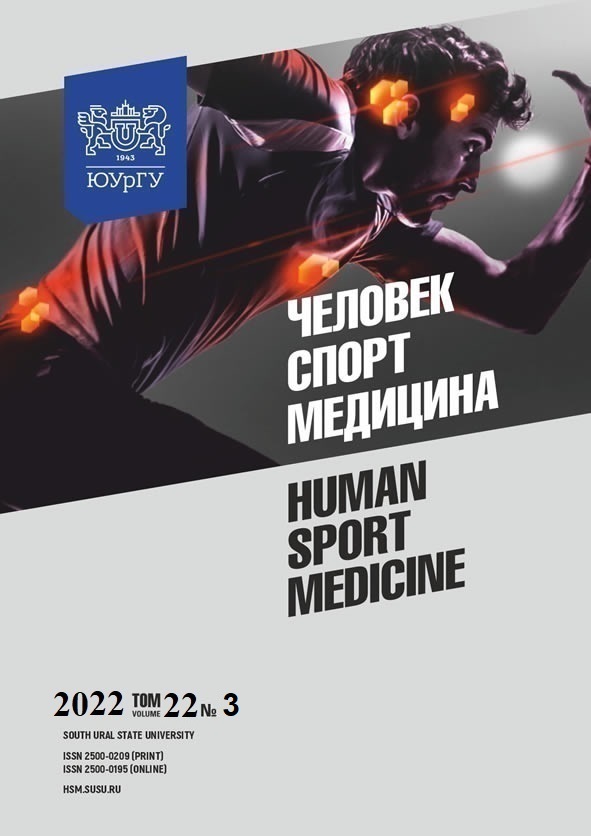THE LIPID PEROXIDATION SYSTEM DURING REHABILITATION IN ATHLETES WITH LOWER JOINT PATHOLOGY
Abstract
Aim. The paper aims to identify the status of lipid peroxidation processes and the clinical, biological and chemical markers of lower joint pathology to develop rehabilitation interventions and their assessment procedures. Materials and methods. Our rehabilitation course involved 74 athletes, including 22 athletes with acute Osgood-Schlatter disease (OSD). Rehabilitation services were provided at Professor Kinzerskiy Clinic, CNS, SONAR, the Department of Sports Medicine and Physical Rehabilitation, the Department of Biochemistry, and the Scientific and Research Institute of Olympic Sports (Ural State University of Physical Education). Blood samples were analyzed for vitamin D, AST, ALT, CRP, rheumatoid factor, lipid peroxidation products (LPP), Fe2+/ascorbate induced peroxidation products. The rehabilitation program consisted of PRP plasma therapy, kinesio taping, instrument-assisted soft tissue mobilization, and dynamic neuromuscular stabilization. Results. Blood biochemistry showed that athletes with OSD had decreased levels of vitamin D, copper, ionized calcium (against normal levels of total calcium), phosphorus, and zinc; increased levels of AP; normal levels of AST, ALT, CRP and rheumatoid factor. Before rehabilitation, increased levels of primary and secondary LPP were found with spectrophotometry compared to the control group (1.22 ± 0.061 and 1.15 ± 0.058 respectively, p < 0.05). In 3 weeks, in athletes, a decrease of LPP levels to those of the control group was found (p < 0.05). In a week, pain levels (VAS) decreased from 7 ± 1.25 to 2 ± 0.25 scores (p < 0.05), in a month, pain syndrome was completely eliminated. Changes in lipid peroxidation occurred against the improved clinical picture, which included pain relief, increased range of motion and physical activity in general. All athletes of the experimental group returned to previous training intensity in 18 ± 2.75 days. Conclusion. Serum LPP levels can be used for the assessment of rehabilitation effectiveness in patients with OSD. These changes correlate with ultrasonic and clinical data (r = –0.765–0.801). In athletes with OSD, there is an increase of lipid peroxidation processes. These changes can be found at the earliest stages of OSD, which can be used for early detection of chondropathy when inflammatory markers are still within reference values (ESR, CRP, rheumatoid factor). During this period, ultrasonic data are of clinical importance, while X-ray data are not sufficient. Intensive training requires controlling vitamin D3 and magnesium levels and preventing their deficiency in a timely manner.
References
References on translit
Copyright (c) 2022 Human. Sport. Medicine

This work is licensed under a Creative Commons Attribution-NonCommercial-NoDerivatives 4.0 International License.















